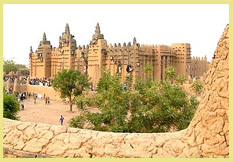




Frontiers of the Roman empire

At its peak in the second and third centuries AD, the Roman Empire stretched across most of northern Europe and around much of the Mediterranean. In North Africa the Romans built towns and cities from Alexandria (Egypt) in the East to Lixus and Volubilis (Morocco) in the West, with some major centres established in the hills 50-100 km inland, where olives could be grown and processed. Everywhere, the Romans built on the same general pattern, leaving behind the familiar elements of Roman urban planning and civic life that characterise the archaeological sites that remain today. Roman towns typically had many grand public buildings including a Capitol, Basilica, Amphitheatre and Public Baths, a triumphal arch and Forum (central square), with wide streets laid out on a grid. Water was brought into town via elaborately built aqueducts and the towns were usually surrounded by a defensive wall with grand entrance gates and sentry posts along their length. The houses of the wealthy classes were opulent, with colonnaded courtyards and lavish mosaics in many of the rooms. And many of these elements survive to this day - despite centuries of neglect and/or looting - and can be seen at most of the sites now included on the world heritage list.
Five of the Roman cities on the world heritage list were built right on the coast, where they served to link the North African interior with the centre of the empire, across the Mediterranean in Rome. Usually these towns were built on sites that had existing towns, some of which were virtually destroyed at the time of Roman occupation, leaving a ‘clean slate’ for re-development. Three of the coastal Roman towns (Cyrene, Leptis Magna and Sabratha) are in present-day Libya, with one in Tunisia (Carthage) and the other (Tipaza) in Algeria. Most inland sites were established at militarily strategic locations in the more fertile farming lands in the hills of the interior, where olive oil was a major export crop and source of wealth. These include the town of Dougga in Tunisia, Djemila and Timgad in Algeria, and Volubilis in Morocco – once the furthest outpost of the empire. The single most impressive building amongst the Roman ruins of North Africa is the Amphitheatre at El Jem (Tunisia), a truly magnificent monument, now partly restored.
To read more about the ruins of Roman towns and cities in North Africa, and see a slideshow of each place, follow these links:




.jpg)